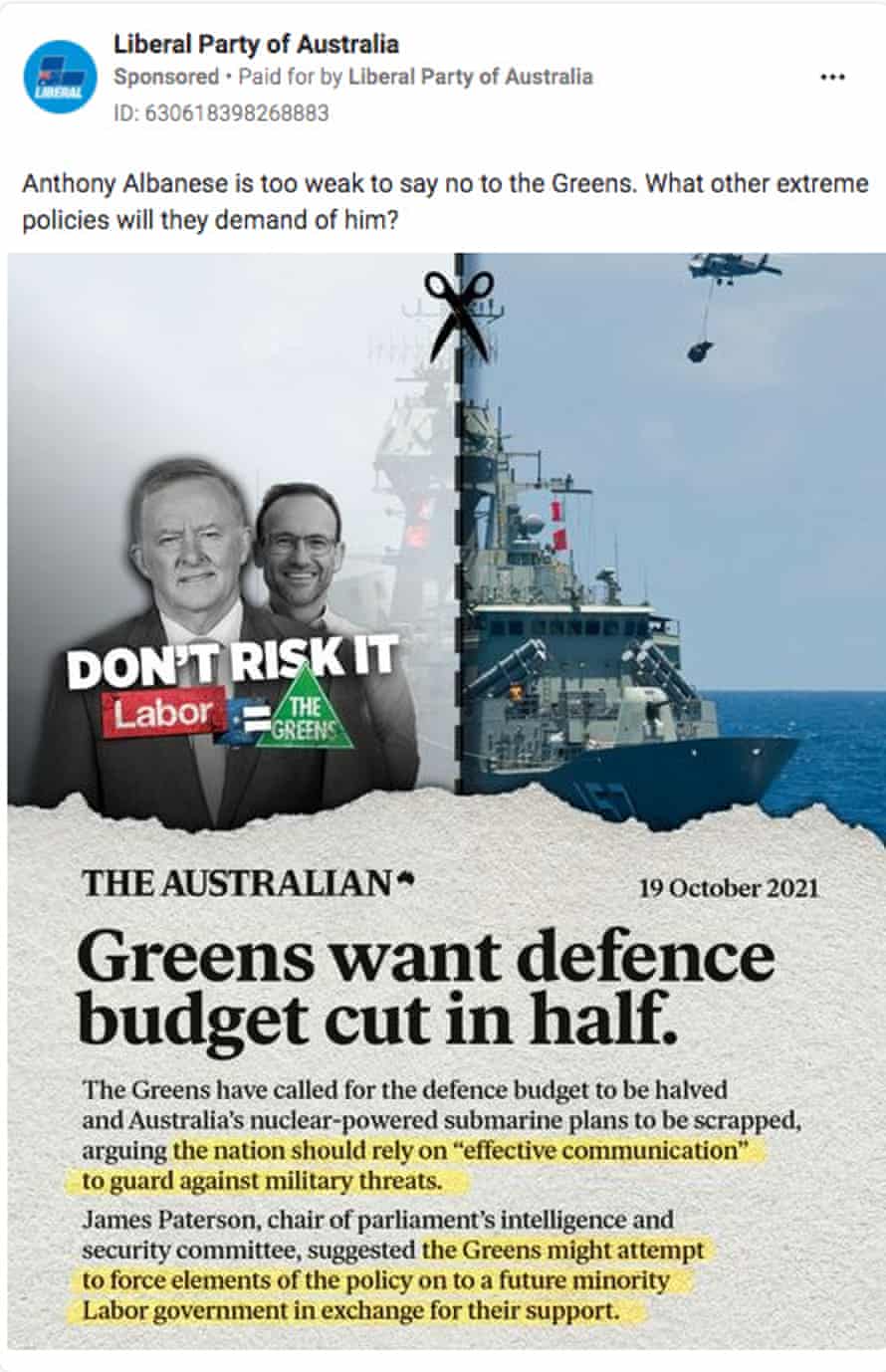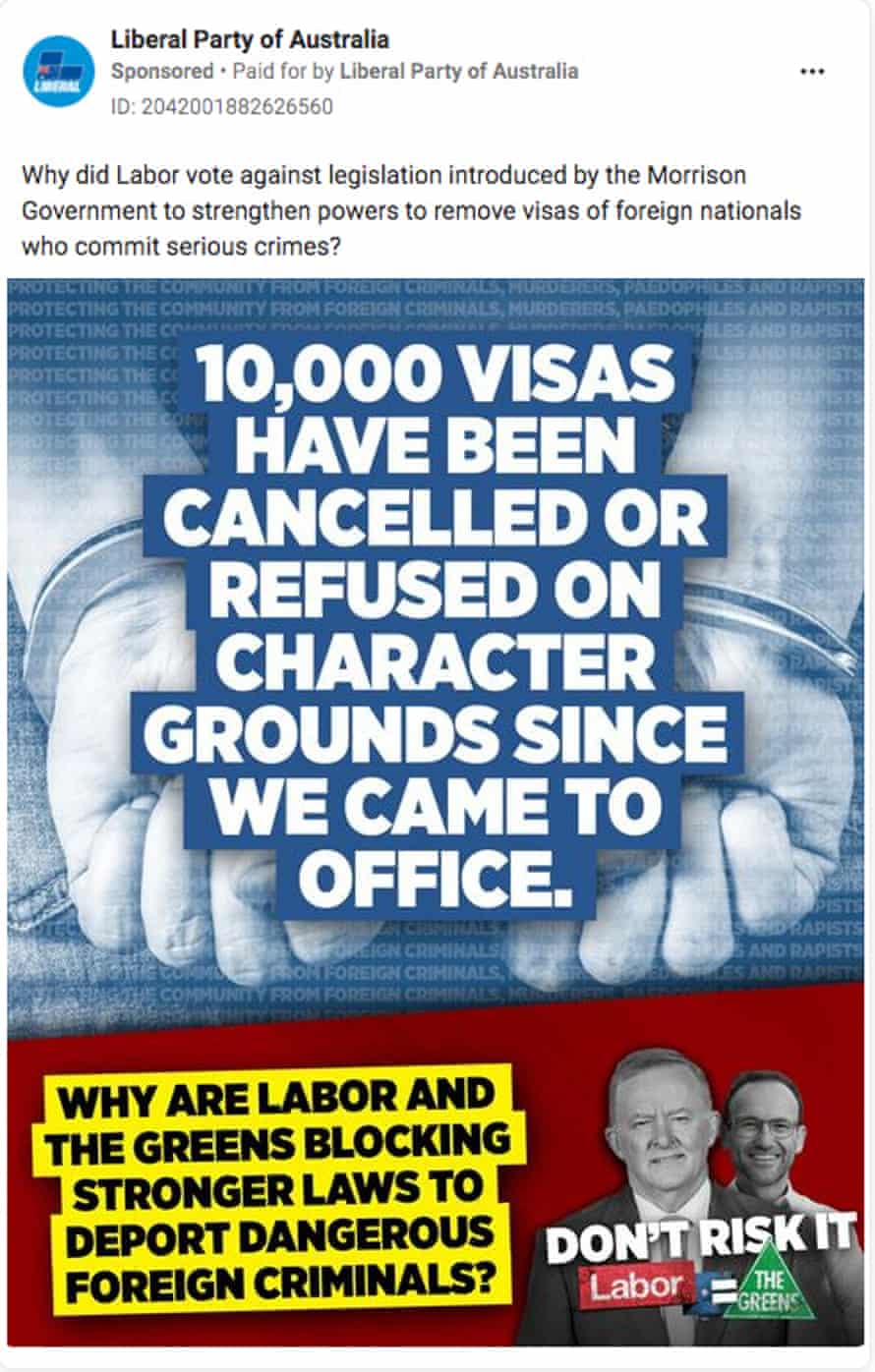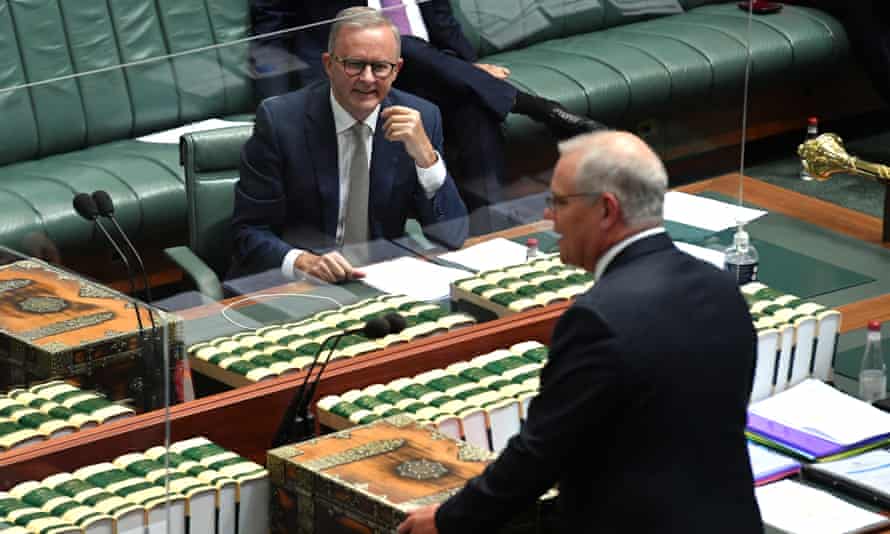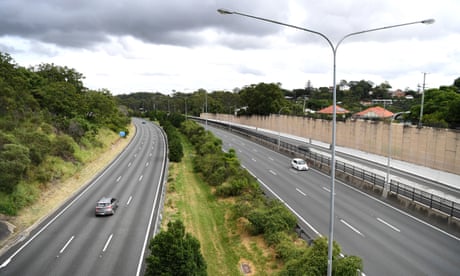Extract from The Guardian
Ads targeted at young men spread claims of Greens-Labor coalition and attempt to position the Coalition as stronger on national security.

Even before the Coalition ramped up its national security attack in parliament this week, the Liberal party had been test-driving the tactic online for weeks, spending thousands of dollars on Facebook ads targeting Albanese, as well as peppering key voting blocs with claims of a Labor-Greens coalition.

Data from Facebook’s ad library shows that the Liberal Party of Australia page on Facebook was running 40 active paid ads, as of Thursday. Of those, nine of the 11 ads with the highest number of impressions – that is, which the advertiser has paid to appear in people’s newsfeeds – are negative ads against Albanese.

They were all launched on 7 February, the day before the start of the parliamentary sitting fortnight.
Facebook allows advertisers to target messages to particular users by age, location and gender. The Liberal page is targeting younger Australians in New South Wales, Queensland and Tasmania with ads questioning Albanese’s record and qualifications for government.
The Liberals also appear to be specifically targeting young men with claims that Labor would govern alongside the Greens – a claim Albanese has repeatedly denied – to weaken Australia’s national security and defence.
Facebook’s ad library shows the Liberal party spent up to $11,000 on the anti-Albanese ads since 7 February, among an active ad spent of up to $22,000.
The ads with the highest number of impressions focus on the government’s key attack lines; claiming Labor would increase taxes and collaborate with the Greens, questioning Albanese’s national security credentials, and criticising him for never having held a treasury or security portfolio in his 25 years in parliament.

Numerous opinion polls show Labor leading the Coalition on a two-party basis, but the gap between Albanese and the prime minister, Scott Morrison, is often much closer. The latest Newspoll showed both leaders had negative net satisfaction ratings – Morrison on minus 16, Albanese on minus six – but the Labor leader consistently records a higher number of voters unsure about his performance.
Both sides see the opportunity to shape the uncommitted public’s perception of Albanese; Labor for the positive, and Liberals to paint a more negative picture.
The Liberal ad with the most impressions, a short attack ad featuring a photo of the Labor leader looking grumpy, asks “What do we actually know about Anthony Albanese?”
One Liberal ad, overwhelmingly targeted to men, linked to the strengthening character test legislation which the government attempted to use as a wedge against Labor this week. The ad, showing two hands in cuffs, boasts of the Coalition having cancelled or refused 10,000 visas on character grounds, and criticises Labor for previously voting against the character test changes.
The ad also features a photo of Albanese and the Greens leader, Adam Bandt, claiming they were “blocking stronger laws”, that “Labor = Greens”, and telling viewers “don’t risk it”. The Liberal party has been running this ad since 23 January, targeting men in NSW and Tasmania; males made up 87% of the audience shown this ad.
Another ad showing Bandt in a turtleneck sweater, with a miniature Albanese sitting in his front pocket, is also targeted overwhelmingly at young men. Of people shown that ad, 86% were men, and 28% were in the 25-34 age bracket.
Four of the top eight
anti-Albanese ads question his relationship with the Greens. One ad,
featuring the opposition leader as a marionette puppet, asks whether the
Greens, “woke warriors” or former Labor leader Bill Shorten “will pull
Albanese’s strings”.
The ad with the second-highest number of impressions is a clipping of an October article in The Australian newspaper, outlining Greens policy to cut the national defence budget. The ad claims Albanese was “too weak to say no to the Greens”.
The article in question states in its third paragraph the Greens policy was “swiftly condemned by the government and Labor”, and quotes opposition defence spokesman Brendan O’Connor calling the plan “delusional”.
In contrast to the dozens of ads currently run by the Liberal party, the Labor party’s main national page is not running any paid ads, and has not since November 2021.

Labor sources said they were waiting until closer to the election, expected in May, before launching its online advertising campaign.
“Digital advertising will be a key part of Labor’s campaign during the next federal election,” a Labor campaign spokesperson told Guardian Australia.
Albanese’s office was contacted for comment.
Labor spent tens of thousands of dollars on ads in September and November, when some had tipped the election would be called.
Many of those ads told audiences “we need your help” in areas including aged care, childcare, the ABC and an anti-corruption commission. More than 30 ads were launched in September, with a budget of up to $70,000.
Labor’s biggest spend in September and October was on ads claiming Morrison failed on his “two jobs” of vaccines and quarantine during the pandemic.
In November, Labor spent up to $25,000 on Facebook ads showing Morrison shaking hands and throwing a shaka hand symbol on his infamous trip to Hawaii, asking: “Will the next Morrison Mistake be stupid or dangerous?” Those ads were targeted overwhelmingly to voters in Queensland.
While neither Albanese nor Morrison were currently running paid ads on their personal Facebook pages, Albanese did launch a run of Facebook ads in November, focused on issues of childcare, renewable energy, Medicare and job creation.
No comments:
Post a Comment